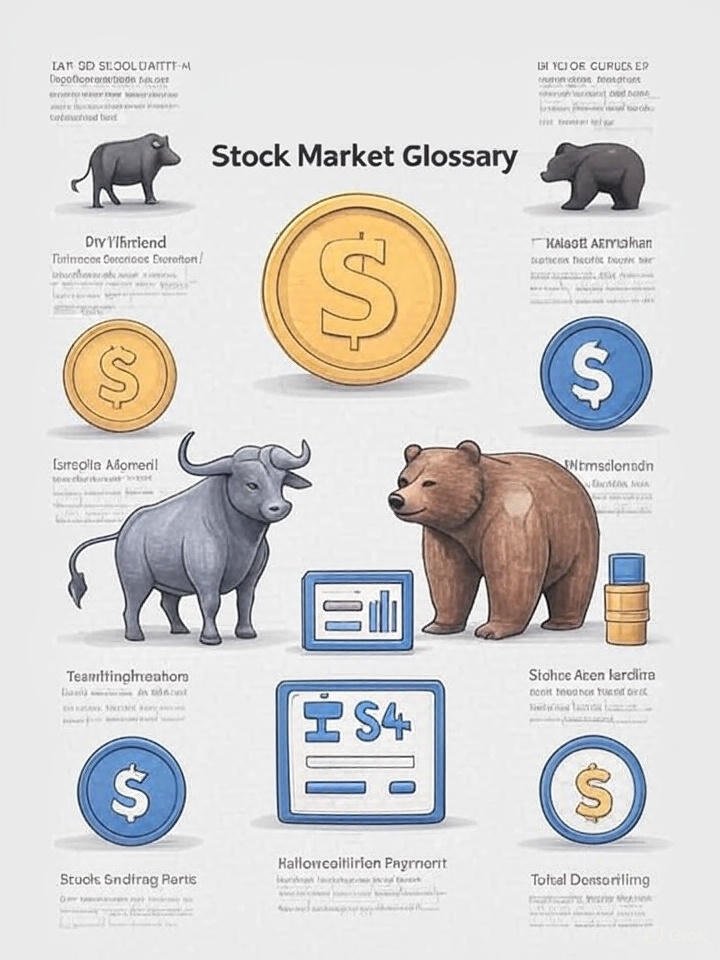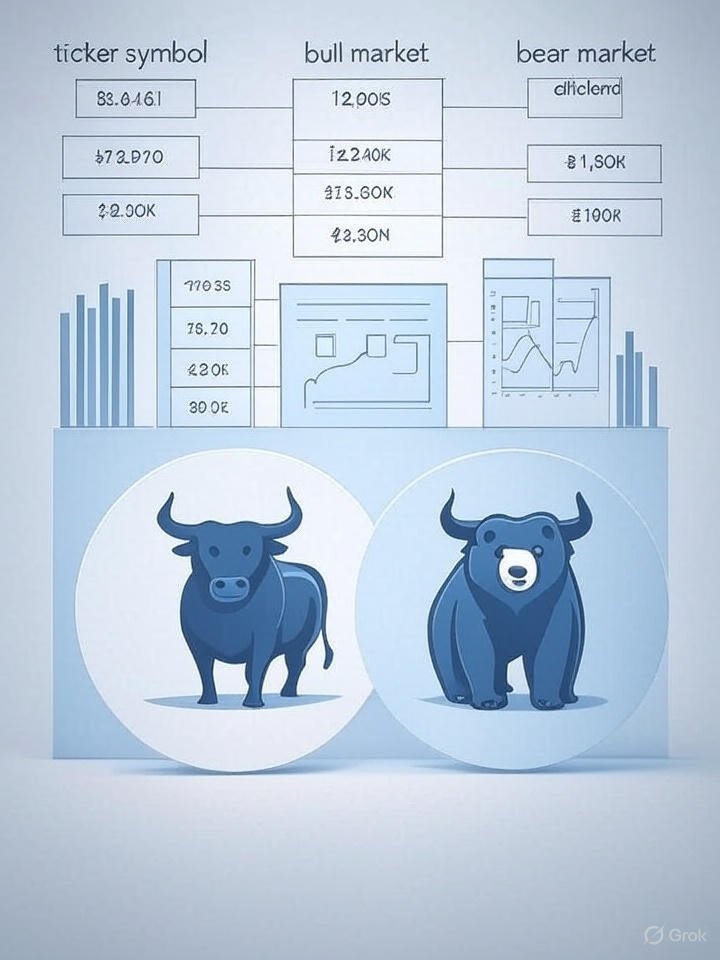Disclaimer: This blog has been presented exactly as it was written — not a single word, sentence, or punctuation mark has been changed. For SEO optimization, only two lines have been added at the end of each heading section. The focus keyword was not provided by the author and has been selected based on the topic.
INVESTING 101
Do You Think You Have to Be Rich to Invest in Stocks? Think again! This guide is designed for beginners who want to learn how to invest and invest in 2020.
This section lays the foundation for learning how to invest in stocks for beginners. Understanding the basics of how to invest in stocks for beginners is the first big step.

I. Introduction
The stock market can feel like a club, and the price of admission can be very steep for many people. We see pictures of Wall Street traders in expensive suits, we hear talk peppered with complex jargon in the news, and we assume you need a fortune just to get a seat at the table. It is one of the worst personal finance myths of all.
The thing is, you don’t need to be wealthy in order to start building wealth. With help from modern technology and a set of beginner-friendly tools, the stock market is open to all who want to take a few minutes to engage, whatever your starting dollar figure.
It’s written to bust that myth wide open and, for the absolute beginner, show you just how to do it. We’ll tell you precisely how to begin investing with 100 dollars, or less. We’re going to let you in on the core concepts in plain, understandable language, guide you through the actual steps you need to take to get an account opened, and show you some of the best types of investments for someone who’s just starting out.
But by the time we finish today, you’ll understand that investing is not the special language of those who are already wealthy, but it’s a valuable resource that you can begin to swear by, today, to help create a more secure and prosperous future.
It’s a perfect starting point for anyone learning how to invest in stocks for beginners. Even with a small amount of cash, you can start your journey in how to invest in stocks for beginners.
🔗 How to Create a Budget Before Investing
II. Why You Need to Start Investing Now (Even If You Have a Small Amount of Money)
Delay is the antagonist to wealth. Lots of people tell themselves, “I’ll start investing once I have more money.” But here’s the thing: In the game of investing, time is your best friend. It’s much less important how much you start with than when you start.
The Power of Compound Interest:
Compounding was supposed to be the invention that Albert Einstein described as the “eighth wonder of the world.” It’s your money making its own money. Consider that more like a snowball going down a hill. It begins small, but rolls and accumulates more snow, becoming a larger ball at an accelerating pace. Your money earns returns when you invest.
The following year, when you are all in, you get returns on your original money and on the returns from the previous year. This effect is explosive over decades. Corbyn wondered if “compound interest is worth it?” It’s not that the magic of time plus regular contributions isn’t real, exactly, but that a small amount saved in a retarget date fund in one’s 20s can reasonably grow to be a much bigger amount than a larger lump saved into such a fund in one’s 40s.
Making More Than Inflation:
Isn’t it just strange how prices always seem to go up, isn’t it? That’s inflation. Even if you’re one of those people who keeps your money stashed away under a metaphorical mattress, or in a basic savings account, your money is actually depreciating, every single year, because its purchasing power is going down. If you actually want to create wealth, however, your money has to grow faster than inflation, and historically, the stock market is one of the best places to do that over the long haul.
Long-term Wealth Building:
Your job helps support you but investing is what creates real, long-term wealth. It’s the method by which you put your money to work for you, creating a source of income that doesn’t require you to trade your time for a paycheck. This is the basic formula for financial freedom — having enough investment income to pay for your living expenses — so you can live life on your terms.
These ideas are core to how to invest in stocks for beginners and why starting early matters. Mastering how to invest in stocks for beginners sets the tone for your long-term wealth journey.

🔗 Common Investment Mistakes Beginners Should Avoid
III. Stock Market for Dummies: The Terms You Need to Know as a Beginner
All the jargon can be intimidating, but the basic principles are actually pretty simple. Here’s a glossary to explain the basics, in plain English.
What is a stock?
A stock is just a tiny, tiny piece of ownership in a public company. When you purchase a share of Apple (ticker: AAPL), you are quite literally buying a small piece of the company — its office buildings, its brand and its future profits.
What is a stock market?
It’s a marketplace, some giant kind of flea market, where people buy and sell pieces of ownership (stocks). The most well-known examples are the New York Stock Exchange (NYSE) and Nasdaq.
Ticker Symbols
These are the shorthand “nicknames” of companies on the stock market. Rather than writing out “Microsoft Corporation,” you type only its ticker symbol, “MSFT.”
Bull Market vs. Bear Market:
This refers to the general trend of the markets. A Bull Market is the market going up and people having a lot of CONFIDENCE (e.g. a bull charges up). A Bear Market occurs when the market is moving lower and negative sentiment abounds (think of a bear sleeping).
Dividends:
The best part of being a shareholder. A dividend is a payment from a company’s profits to its owners (the shareholders) as a reward for the investment they have made. It’s getting paid for owning a piece of the company.
Understanding these basics is part of mastering how to invest in stocks for beginners. These definitions can truly simplify your path to how to invest in stocks for beginners.
IV. How to Invest in Stocks if You Have A Small Budget
Byordinates Lord ot.Committee Members Carlos Cross, Esq GemmaCutler Ian Gordon Volunteers Copy Editor: Akeisha Johnson ANNUAL REPORT page 2 Execution of Common Defense The NCBA’s effectiveness depends entirely on its members’ active participation.
Ready to take the plunge? Here’s a basic three-step program to guide you on your way.
Step 1: Find What Your Investment Goals and Risk Tolerance Are.
Why are you investing? Is the goal near-term, for instance a house down payment in five years, or long-term, like retirement 40 years from now? The timing will help determine the kind of investments you make. You also should consider your ability to stomach risk — how comfortable with would you be if your investment fell 10% in a month? Only by being honest about your choices and goals can you develop a strategy that you will stick to.
🔗 Risk and Return: What Every Beginner Should Know
Step 2: Select the Best Brokerage Account for You.
A brokerage account is merely an account that allows you to buy and sell investments. There are several beginner-friendly options:
Low-Cost Online Brokers:
You might use companies like Fidelity, Charles Schwab, and Vanguard. They provide an enormous range of investment options as well as commission-free trades for most stocks and exchange-traded funds (ETFs).
Robo-Advisors
These are great for hands-off investors who are just getting started, and need help on the investment-selection side. You answer a handful of questions about your goals and how much risk you’re willing to take, and their computer algorithms create and manage a diversified portfolio for you for a small annual fee.
Micro-Investing Apps:
Apps like Acorns and Stash are among the widely used investment apps for beginners who don’t have a lot of money. Acorns rounds up your everyday purchases to the nearest dollar and automatically invests the spare change. With as little as $5, Stash makes it easy to buy fractional shares.
Step 3: Funding Your Account.
After you pick a broker and open your account (which takes about 15 minutes online), you’ll need to put money in the account. You will just need to connect your checking or savings account and move some money over, similar to making a bill payment online. The number one rule here is to begin with an amount you can live with. The point is to start and to develop a consistent habit, not to bet the farm.
These beginner steps are essential to know how to invest in stocks for beginners. Anyone serious about how to invest in stocks for beginners should follow this method.

V. Best First Investments for Newbies or Beginners with Little Money
You have set up your account and funded it. So what should you actually buy? For beginners, simplicity and diversification — in other words, not trying to come up with the next can’t-miss thing — are best.
A. Index Funds and ETFs: The Beginner’s Best Friend.
An Exchange-Traded Fund (ETF) or an index fund is akin to a basket that contains hundreds or even thousands of dissimilar stocks. By purchasing even a single share of an S&P 500 ETF, for instance, you immediately divvy up a little piece of the 500 largest United States companies between the dry cleaner, the oil company and the videoconferencing firm. This is instant diversification, which will significantly reduce your risk. They are also extremely low fee, making them a fantastic base for any first-time portfolio.
B. Dividend Stocks:
These are stocks of companies that distribute part of their profits to you, as I said. Although you can construct a portfolio of individual dividend stocks, many off-the-shelf ETFs concentrate on dividend-paying companies, providing you the best of both worlds: income and diversification.
C. Fractional Shares: Own the Giants
For just a few dollars, you can now be a part owner of the Giants. It used to be that if you wanted to own shares in a company like Amazon or Google, you needed thousands of dollars. Not anymore. Fractional shares enable you to buy a small portion of a share for as little as $1. That means that with very little money you can own pieces of the largest and best companies in the world, and it becomes easier than ever to build a diversified portfolio when your dollars only buy you fractions of individual stocks.
This section simplifies the practical part of how to invest in stocks for beginners. These are smart picks when learning how to invest in stocks for beginners.
VI. How to build a well diversified portfolio with very little money
Asset allocation is the absolute number one rule of thumb in managing risk. It is the classic advice: “Don’t put all your eggs in one basket.” And if you own just one stock, and that company has a bad year, you could lose everything you have. But if you have a little bit of 500 companies, the bad performance of a few gets canceled out by the good performance of others.
Here’s a diversified starter portfolio example for a beginner can set up with $500, made up of low-cost ETFs:
- $250 in any All US Stock Market ETF (Like VTI or ITOT)
- $150 in a Total International Stock Market ETF (eg VXUS or IXUS)
- $100 in a Total US Bond Market ETF (such as BND or AGG)
And with this simple three-fund portfolio, you own thousands of companies and bonds from all over the world, and all for very little cost.
Smart allocation is a major lesson in how to invest in stocks for beginners. Even with small capital, how to invest in stocks for beginners becomes doable with good diversification.
VII. 3. Mistakes all beginner investors make – and how to fix them
Keep away from these pitfalls as you start your journey:
Trying to catch a falling knife:
Don’t “buy low and sell high. Professional investors are incapable of doing it with any great degree of consistency. What matters is “time in the market” rather than “timing the market.” Be consistently investing, and let the heavy lifting of time do the work.
Basing Decisions on Emotion:
The market will rise, and it will fall. It’s important not to be panic selling when the market is down, or greedy and piling into it when it’s hot. It made a very good plan and it stuck to the plan.
Investing in What You Don’t Understand:
Don’t speculate in hot new cryptocurrencies, or penny stocks, just because some random person on the internet told you to. If you can’t describe in a sentence or two what a company does, you probably shouldn’t own it.
Ignoring Fees:
A modest 1 percent fee can eat up close to a third of your returns over time. Stick with low-cost index funds and E.T.F.s to let more of your money work for you.
Avoiding mistakes is half the battle in how to invest in stocks for beginners. Every beginner should know these traps when learning how to invest in stocks for beginners.

VIII. Conclusion
The notion that you must be wealthy — or at least have a certain amount of money — in order to invest is now officially an artifact of the past. Once you know the magic of compound interest, have opened a brokerage account, and have access to basic, low-cost, diversified investments like ETFs, you can begin building wealth today with as little as $5. The road to financial independence is a marathon, not a sprint. The essential part is to take that first leap.
Do not wait for when you have “extra money.” Let me tell you, time is the most precious thing you have. Open an account, established a small automatic transfer and make your first investment. The best time to begin investing was yesterday; the second best is now. Trust me, your future self will thank you.
We hope you now feel confident in how to invest in stocks for beginners. You’ve got everything you need to get started — now just begin.
